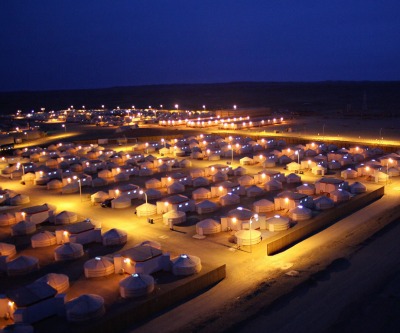
Last week Mongolian Prime Minister Chimediin Saikhanbileg announced that his Cabinet has decided to proceed with the nearly $5 billion second phase at Oyu Tolgoi after two years of often bitter negotiations between the government and Anglo-Australian miner Rio Tinto.
The government of Mongolia owns 34% of the mine in the south Gobi desert near the Chinese border and Rio-controlled Turquoise Hill (TSX:TRQ) holds the remainder.
Oyo Tolgoi phase II is a truly giant project – an updated feasibility study including the underground expansion released in September shows recoverable copper of 24.9 billion pounds, 11.9 million ounces of gold and 78 million ounces of silver over a mine life of 41 years. At today’s metals prices that’s worth an eye-watering $92 billion.
A separate economic assessment to develop Oyu Tolgoi further and include other deposits at the property shows just what a rich find Oyu Tolgoi really was. This scenario provides a 94 year mine life and recoverable copper of 56.5 billion pounds, 27.9 million ounces of gold and 195.2 million ounces of silver, pushing the value of the mine to closer to $200 billion.
Oyu Tolgoi would certainly help Rio lighten its reliance on iron ore which is trading at near-decade lows and give it more exposure to copper for which the outlook is much brighter.
But as much as it’s a great asset for the London and Melbourne-based company, this graphic prepared by Dale Choi of Independent Mongolian Metals & Mining Research, an Ulaanbaatar-based research company, shows just how vital the turquoise hill is to the nation of just over three million citizens:

Image of a section of the main construction camp and administration centre of Oyu Tolgoi in February 2011 courtesy of Turquoise Hill
Comments
golddigger69
It should not be forgotten that this was a property brought to BHP when they acquired Magma copper back in the 1990s, but like Resolution, another Magma find, was thrown away by the Big Fella!